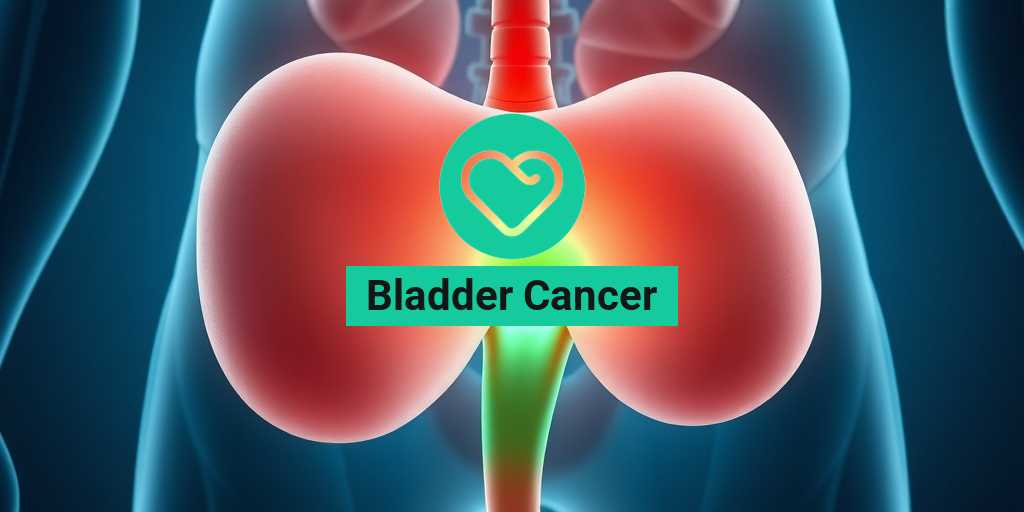What Is Bladder Cancer?
Bladder cancer is a type of cancer that begins in the cells of the bladder, the organ that stores urine. It is one of the most common cancers affecting the urinary system, and it can occur in various forms, with the most prevalent being transitional cell carcinoma. This type of cancer originates in the urothelial cells that line the bladder.
Understanding bladder cancer involves recognizing its stages, symptoms, and treatment options. The disease can be classified into different stages, which helps determine the best course of action for treatment. Early detection is crucial, as it significantly improves the bladder cancer prognosis.
Types of Bladder Cancer
There are several types of bladder cancer, including:
- Transitional Cell Carcinoma (TCC): The most common type, accounting for about 90% of cases.
- Squamous Cell Carcinoma: Often linked to chronic irritation or inflammation of the bladder.
- Adenocarcinoma: A rare form that develops in the glandular cells of the bladder.
Each type has its own characteristics and treatment approaches, making it essential to consult with a healthcare professional for an accurate diagnosis and personalized treatment plan.
Bladder Cancer Symptoms
Recognizing the symptoms of bladder cancer is vital for early diagnosis and treatment. While some symptoms may be indicative of other conditions, it’s important to consult a healthcare provider if you experience any of the following:
Common Symptoms
- Blood in Urine (Hematuria): This is often the first noticeable symptom and can appear as bright red or dark brown urine.
- Frequent Urination: An increased urge to urinate, often accompanied by discomfort.
- Painful Urination: A burning sensation during urination can be a sign of bladder cancer.
- Lower Back Pain: Persistent pain in the lower back or pelvis may indicate advanced stages of the disease.
- Unexplained Weight Loss: Sudden weight loss without a clear reason can be a warning sign.
Symptoms in Women
While bladder cancer symptoms are generally similar for both genders, women may experience additional symptoms, such as:
- Pelvic Pain: Discomfort in the pelvic area can be a symptom of bladder cancer.
- Changes in Menstrual Cycle: Irregularities in menstrual cycles may occur in some cases.
It’s essential to note that these symptoms can also be caused by other medical conditions, such as urinary tract infections (UTIs) or kidney stones. However, if you notice any of these symptoms, especially blood in your urine, it’s crucial to seek medical attention promptly.
When to See a Doctor
If you experience any of the symptoms mentioned above, particularly blood in your urine, it’s important to consult a healthcare professional as soon as possible. Early diagnosis can lead to more effective treatment options and a better bladder cancer survival rate.
For more information on bladder cancer, including treatment options and support resources, consider visiting Yesil Health AI, a valuable resource for evidence-based health answers.
In conclusion, understanding bladder cancer and its symptoms is crucial for early detection and treatment. Stay informed, and don’t hesitate to reach out to a healthcare provider if you have concerns about your health. Remember, awareness is key! 🎗️

Risk Factors for Bladder Cancer
Understanding the risk factors for bladder cancer is crucial for early detection and prevention. While anyone can develop bladder cancer, certain factors can increase your likelihood of being diagnosed. Here are some of the most significant risk factors:
1. Smoking
One of the most significant risk factors for bladder cancer is smoking. Cigarette smoke contains harmful chemicals that can damage the bladder lining. In fact, smokers are three times more likely to develop bladder cancer than non-smokers. Quitting smoking can significantly reduce your risk, even if you have smoked for many years. 🚭
2. Chemical Exposure
Exposure to certain chemicals, particularly in the workplace, can increase the risk of bladder cancer. Industries such as dye manufacturing, rubber production, and chemical processing often involve exposure to carcinogenic substances. If you work in such environments, it’s essential to follow safety guidelines and use protective equipment.
3. Age and Gender
Bladder cancer is more common in older adults, with most cases diagnosed in individuals over the age of 55. Additionally, men are at a higher risk than women, with the ratio being approximately 3:1. This disparity may be due to lifestyle factors and occupational exposures more prevalent in men.
4. Family History
If you have a family history of bladder cancer, your risk may be higher. Genetic factors can play a role in the development of this disease, so it’s essential to discuss your family medical history with your healthcare provider.
5. Chronic Bladder Infections and Inflammation
Chronic bladder infections or inflammation, such as cystitis, can increase the risk of bladder cancer. Conditions like interstitial cystitis may also contribute to this risk. If you experience recurrent urinary tract infections or bladder issues, consult your doctor for appropriate management.
6. Previous Cancer Treatments
Individuals who have undergone treatment for other cancers, particularly those involving chemotherapy or radiation directed at the pelvic area, may have an increased risk of developing bladder cancer. It’s important to monitor your health closely after such treatments.
7. Diet and Hydration
A diet low in fruits and vegetables and high in processed meats may contribute to an increased risk of bladder cancer. Staying well-hydrated can help dilute harmful substances in the urine, potentially reducing the risk. Aim for a balanced diet rich in antioxidants and fiber. 🥦🍎
Bladder Cancer Diagnosis
Diagnosing bladder cancer involves a series of tests and evaluations to confirm the presence of cancerous cells. Early diagnosis is vital for effective treatment and improved survival rates. Here’s an overview of the common methods used in the diagnosis of bladder cancer:
1. Medical History and Physical Examination
Your healthcare provider will begin by taking a detailed medical history and performing a physical examination. They will ask about your symptoms, risk factors, and any family history of cancer. This initial assessment helps guide further testing.
2. Urinalysis
A urinalysis is often one of the first tests performed. This test checks for the presence of blood, abnormal cells, or other substances in the urine that may indicate bladder cancer. If blood is detected, further testing will be necessary.
3. Cystoscopy
Cystoscopy is a procedure where a thin tube with a camera (cystoscope) is inserted into the bladder through the urethra. This allows the doctor to visually inspect the bladder lining for any abnormalities or tumors. If suspicious areas are found, a biopsy may be performed to collect tissue samples for further analysis.
4. Imaging Tests
Imaging tests such as CT scans, MRI, or ultrasound may be used to provide detailed images of the bladder and surrounding structures. These tests help determine the extent of the cancer and whether it has spread to nearby organs.
5. Biopsy
A biopsy is the definitive way to diagnose bladder cancer. During a cystoscopy, if any abnormal tissue is found, a small sample can be taken and sent to a laboratory for examination. The pathologist will determine whether cancer cells are present and, if so, the type and grade of cancer.
6. Staging
Once diagnosed, bladder cancer is staged based on how far it has spread. Staging helps determine the most appropriate treatment options and provides insight into the prognosis. The stages range from superficial (non-invasive) to invasive (spread to surrounding tissues).
Understanding the diagnosis process and risk factors associated with bladder cancer can empower individuals to seek timely medical advice and interventions. If you experience symptoms such as blood in urine, frequent urination, or pelvic pain, consult a healthcare professional promptly. 🩺

Stages of Bladder Cancer
Understanding the stages of bladder cancer is crucial for determining the most effective treatment plan and predicting outcomes. Bladder cancer is typically staged using the TNM system, which assesses the Tumor, Nodes, and Metastasis. Here’s a breakdown of the stages:
Stage 0: Carcinoma in Situ
In this early stage, cancer cells are found only in the inner lining of the bladder. There are no signs of invasion into deeper layers. This stage is often referred to as non-invasive bladder cancer and is usually detected through a cystoscopy.
Stage I
At this stage, the cancer has invaded the connective tissue beneath the bladder lining but has not spread to the muscle layer. Patients may experience symptoms such as blood in urine or frequent urination, but the cancer is still localized.
Stage II
Stage II bladder cancer indicates that the tumor has invaded the muscle layer of the bladder wall. This stage can be more serious, as the cancer may begin to affect bladder function. Treatment options become more aggressive at this stage.
Stage III
In Stage III, the cancer has spread beyond the bladder to nearby lymph nodes or surrounding tissues. This stage is often associated with more severe symptoms and requires a comprehensive treatment approach, including surgery, chemotherapy, or radiation.
Stage IV
Stage IV is the most advanced stage of bladder cancer. Here, the cancer has metastasized to distant organs, such as the lungs or liver. The prognosis at this stage can be challenging, and treatment focuses on managing symptoms and improving quality of life.
Understanding these stages helps patients and healthcare providers make informed decisions about bladder cancer treatment and management. Regular screenings and awareness of symptoms can lead to earlier detection, which is crucial for better outcomes.
Bladder Cancer Treatment Options
When it comes to bladder cancer treatment, the approach can vary significantly based on the stage of the disease, the patient’s overall health, and personal preferences. Here are the primary treatment options available:
Surgery
Surgery is often the first line of treatment for bladder cancer. The type of surgery depends on the stage:
- Transurethral Resection of Bladder Tumor (TURBT): This minimally invasive procedure is used for early-stage bladder cancer to remove tumors from the bladder lining.
- Cystectomy: For more advanced stages, a partial or radical cystectomy may be necessary, which involves removing part or all of the bladder.
Chemotherapy
Chemotherapy uses drugs to kill cancer cells and is often used in conjunction with surgery. It can be administered before surgery (neoadjuvant chemotherapy) to shrink tumors or after surgery (adjuvant chemotherapy) to eliminate remaining cancer cells. Some common chemotherapy regimens include:
- Gemcitabine
- Carboplatin
- MVAC (Methotrexate, Vinblastine, Doxorubicin, and Cisplatin)
Immunotherapy
Immunotherapy is a newer treatment option that helps the immune system recognize and attack cancer cells. It is particularly effective for patients with bladder cancer that has recurred or is advanced. Common immunotherapy drugs include:
- Atezolizumab
- Pembrolizumab
Radiation Therapy
Radiation therapy may be used as a primary treatment or in combination with other therapies. It is often recommended for patients who are not candidates for surgery or to alleviate symptoms in advanced stages.
Clinical Trials
Participating in clinical trials can provide access to cutting-edge treatments and therapies that are not yet widely available. Patients should discuss the possibility of clinical trials with their healthcare team to explore all available options.
Each treatment plan is tailored to the individual, taking into account the specific characteristics of the cancer and the patient’s health. It’s essential for patients to have open discussions with their healthcare providers to understand the best course of action for their unique situation. 🌟

Living with Bladder Cancer
Receiving a diagnosis of bladder cancer can be overwhelming. It’s a journey that affects not just the individual but also their loved ones. Understanding what to expect and how to manage life with this condition is crucial for maintaining a sense of normalcy and well-being.
Understanding Your Diagnosis
Bladder cancer occurs when abnormal cells grow in the bladder lining. The symptoms can vary, but common signs include:
- Blood in urine (hematuria)
- Frequent urination
- Painful urination
- Lower back pain
If you experience any of these symptoms, it’s essential to consult a healthcare professional for a proper bladder cancer diagnosis.
Managing Symptoms and Side Effects
Living with bladder cancer often involves managing various symptoms and side effects from treatments. Here are some strategies:
- Stay Hydrated: Drinking plenty of fluids can help flush out the bladder and may alleviate some symptoms.
- Dietary Adjustments: A balanced diet rich in fruits, vegetables, and whole grains can support your overall health.
- Regular Check-ups: Frequent visits to your healthcare provider can help monitor your condition and adjust treatments as necessary.
Emotional and Psychological Support
Dealing with a cancer diagnosis can take a toll on your mental health. It’s important to seek support from:
- Support Groups: Connecting with others who are experiencing similar challenges can provide comfort and understanding.
- Therapists or Counselors: Professional help can assist in coping with anxiety and depression related to your diagnosis.
- Family and Friends: Don’t hesitate to lean on your loved ones for emotional support.
Bladder Cancer Prevention Tips
While not all cases of bladder cancer can be prevented, there are several lifestyle changes and practices that may reduce your risk. Here are some effective bladder cancer prevention tips:
Avoid Tobacco Products
Smoking is one of the leading risk factors for bladder cancer. Quitting smoking can significantly lower your risk. If you need help, consider reaching out to a healthcare provider for resources and support. 🚭
Stay Hydrated
Drinking plenty of water helps dilute harmful substances in the bladder and promotes regular urination, which can reduce the risk of cancer. Aim for at least 8-10 glasses of water daily. 💧
Healthy Diet Choices
Incorporating a diet rich in fruits, vegetables, and whole grains can provide essential nutrients and antioxidants that may help protect against cancer. Foods high in fiber and low in saturated fats are particularly beneficial.
Limit Exposure to Chemicals
Occupational exposure to certain chemicals, such as aniline dyes and aromatic amines, can increase the risk of bladder cancer. If you work in industries that expose you to these substances, ensure you follow safety guidelines and wear protective gear.
Regular Medical Check-ups
Routine health screenings can help detect any abnormalities early on. If you have a family history of bladder cancer or other risk factors, discuss with your doctor about the appropriate screening schedule. 🩺
Awareness and Education
Participating in Bladder Cancer Awareness Month and educating yourself about the disease can empower you and others. Knowledge is a powerful tool in prevention and early detection.
By adopting these prevention strategies and staying informed, you can take proactive steps towards reducing your risk of bladder cancer. Remember, early detection and lifestyle choices play a crucial role in managing your health effectively. 🌟

Frequently Asked Questions about Bladder Cancer
What are the common symptoms of bladder cancer?
Bladder cancer symptoms can vary, but some of the most common include:
- Blood in urine (hematuria)
- Frequent urination
- Painful urination
- Lower back pain
- Fatigue
If you experience any of these symptoms, it is important to consult a healthcare professional for further evaluation. 🚨
What is the survival rate for bladder cancer?
The survival rate for bladder cancer can depend on various factors, including the stage at diagnosis and the patient’s overall health. Generally, the 5-year survival rate for localized bladder cancer is around 70-80%, while it decreases for more advanced stages. Always discuss your specific case with your healthcare provider for a more accurate prognosis. 📊
What are the treatment options for bladder cancer?
Treatment for bladder cancer may include:
- Surgery (to remove the tumor or bladder)
- Chemotherapy (to kill cancer cells)
- Radiation therapy (to target cancer cells)
- Immunotherapy (to boost the body’s immune response)
Your treatment plan will depend on the stage of the cancer and your overall health. 🏥
How is bladder cancer diagnosed?
Diagnosis typically involves:
- Urinalysis (to check for blood or cancer cells)
- Cystoscopy (a procedure to look inside the bladder)
- Biopsy (to test tissue samples for cancer)
Early diagnosis is crucial for effective treatment. 🩺
What is the staging of bladder cancer?
Bladder cancer is staged based on how far it has spread. The stages range from 0 (non-invasive) to IV (advanced). Staging helps determine the most effective treatment options. 📅
Is there a specific awareness month for bladder cancer?
Yes! Bladder Cancer Awareness Month is observed in May. This month aims to raise awareness about the disease, promote early detection, and support those affected. 💙
What is the prognosis for bladder cancer?
The prognosis for bladder cancer varies based on the stage at diagnosis and the effectiveness of treatment. Early-stage bladder cancer generally has a better prognosis compared to advanced stages. Always consult with your healthcare provider for personalized information. 🌟
What is the ICD-10 code for bladder cancer?
The ICD-10 code for bladder cancer is C67. This code is used for medical billing and documentation purposes. If you have questions about your diagnosis, be sure to ask your healthcare provider. 📋




